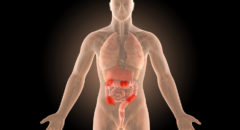
When most people think of joint pain, they think of arthritis, something that many Black people are no stranger to living with. But, depending on the type of arthritis, other symptoms can crop up.
Here's how to spot some of the most common signs of different types of arthritis.
Arthritis can cause painful symptoms that make daily activities challenging, according to the National Institute of Arthritis and Musculoskeletal and Skin Diseases (NIAMS).
Dr. Paul DeMarco, NIAMS Rheumatoid Fellowship Training Program director, explained that "it is extremely important to understand the type of arthritis afflicting the sufferer, as some arthritis syndromes have effects throughout the body."
To help you better understand just how arthritis can affect the body, here is a list of eight of the most common types:
- Inflammatory arthritis
- Psoriatic arthritis
- Rheumatoid arthritis
- Osteoarthritis
- Gout
- Juvenile arthritis
- Infectious arthritis
- Reactive arthritis
Here are some common arthritis symptoms, broken down by the type of arthritis the patient has:
RELATED: 8 Awesome Arthritis Self Care Tips
Inflammatory arthritis symptoms
Inflammatory arthritis occurs when an overactive immune system causes joint inflammation, according to the Hospital for Special Surgery (HHS), in New York City.
Symptoms of inflammatory arthritis include:
- Pain and stiffness, especially in the morning or after periods of inactivity
- Warm sensations in and around affected joints
- Joint swelling and redness
- Inflammation of the skin or internal organs
These symptoms are often experienced as strong flare-ups, followed by a period of inactivity.
RELATED: 10 Ways to Reduce Your Risk of Psoriatic Arthritis
Psoriatic arthritis symptoms
Psoriatic arthritis (PsA) is a type of inflammatory arthritis, and it usually happens to people with psoriasis, according to NIAMS. It is less common in Black Americans than in whites, but skin symptoms may be more severe in Blacks.
Psoriatic arthritis symptoms include:
- Joint stiffness, pain and swelling, especially in the morning
- Eye inflammation
- Fatigue
- Soreness in spots where tendons attach to bones
- Inflammatory bowel disease
- Nail crumbling, separating or denting
- Flaky, swollen patches of skin
"PsA is usually not found on the same joints on both sides of the body, so it is asymmetric," DeMarco notes.
Rheumatoid arthritis symptoms
Rheumatoid arthritis is also a type of inflammatory arthritis. More specifically, it's an autoimmune disease, meaning the immune system attacks its own joint tissues. It can occur throughout the body, but usually affects the hands, wrists and feet, according to NIAMS.
Rheumatoid arthritis symptoms include:
- Joint stiffness that lasts longer than half an hour
- Joint pain and inflammation
- Fatigue
- Loss of appetite
- Mild fever
- Nodules, or lumps beneath the skin
- Medical issues in the lungs, heart, skin, nerves and eyes
Unlike PsA, rheumatoid arthritis typically occurs in the same joints on both sides of the body.
RELATED: 10 Surprising Ways Arthritis Can Affect Your Whole Body
Osteoarthritis symptoms
Osteoarthritis is the most common type of arthritis, affecting over 32 million U.S. adults, according to the U.S. Centers for Disease Control and Prevention. It's caused by wear and tear on joint cartilage as people age.
Osteoarthritis (OA) affects Black Americans more than whites and is especially among older populations.
"Symptoms tend to occur more slowly over time, first occurring every now and then, and then becoming more chronic," Scripps Clinic rheumatologist Dr. Kavitta Allem said in a recent interview for San Diego Health.
NIAMS states that osteoarthritis symptoms may include:
- Joint stiffness that lasts less than half an hour
- Pain and swelling during and immediately after activity
- Unstable sensations in the joints
- Scraping noises when walking, particularly in the knees
- Radiating pain down the legs
- Stiffness in the lower back and neck
- Bone spurs (enlargements) in the hands
- Difficulty standing and sitting
- Fatigue, insomnia and depression
Gout symptoms
Gout is also a type of inflammatory arthritis, caused by too much uric acid in the blood. This triggers crystals to form on the joints. The CDC states that it usually affects just one joint at a time, usually in a foot, ankle, or knee.
This inflammatory arthritis affects more than 9 million Americans, and is more common in men, older adults and Black Americans, according to the Arthritis Foundation.
Gout symptoms include:
- Intense pain
- Swelling
- Inflammation and warmth
"The joints that have gout, the symptoms come on very suddenly, generally over the course of a night," Allem notes.
RELATED: Living with Juvenile Idiopathic Arthritis: Coping Strategies for Children and Families
Juvenile arthritis symptoms
The Arthritis Foundation explains that juvenile arthritis is a group of arthritis conditions that affect children under the age of 16.
Although symptoms may vary, here are some of the most common:
- Joint pain, tenderness, stiffness and warmth, especially after a period of inactivity
- Eye inflammation
- Skin rashes
- High fever
- Fatigue
- Loss of appetite
- Shortness of breath (when the lungs are affected)
- Diarrhea and bloating (when the digestive tract is affected)
Infectious arthritis symptoms
Infectious arthritis (septic arthritis) is caused by a bacterial, viral or fungal infection of the joint tissues and fluids. More children are affected than adults, according to the Cleveland Clinic.
The symptoms of infectious arthritis include:
- Fever
- Joint tenderness, inflammation, warmth and pain
- Limited range of motion
Reactive arthritis symptoms
NIAMS states that reactive arthritis occurs due to an infection, but symptoms don't start until the infection is cleared up. They may include:
- Joint pain and stiffness, especially in the lower limbs
- Eye and urinary tract inflammation
- Inflamed fingers and toes
- Fever
- Fatigue
- Skin rash
- Abdominal pain and diarrhea
- Nails that thicken
- Weight loss
- Mouth ulcers
When to seek help for arthritis symptoms
"If you're feeling swelling or pain in your joints, or something is limiting your ability to be active, you should see a doctor," Allem explains. "There are new treatments for arthritis to help you feel better and get back to what you enjoy."








